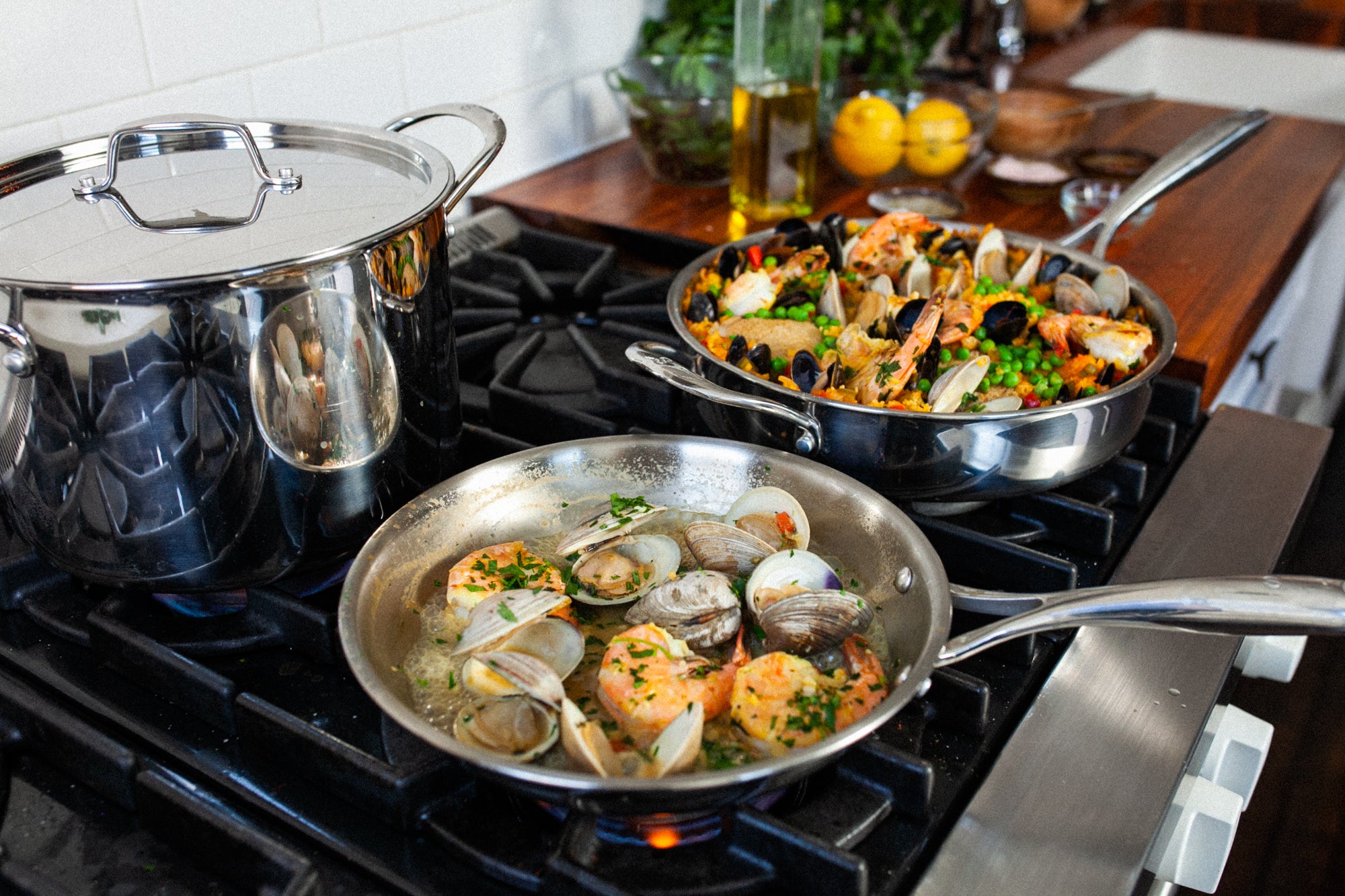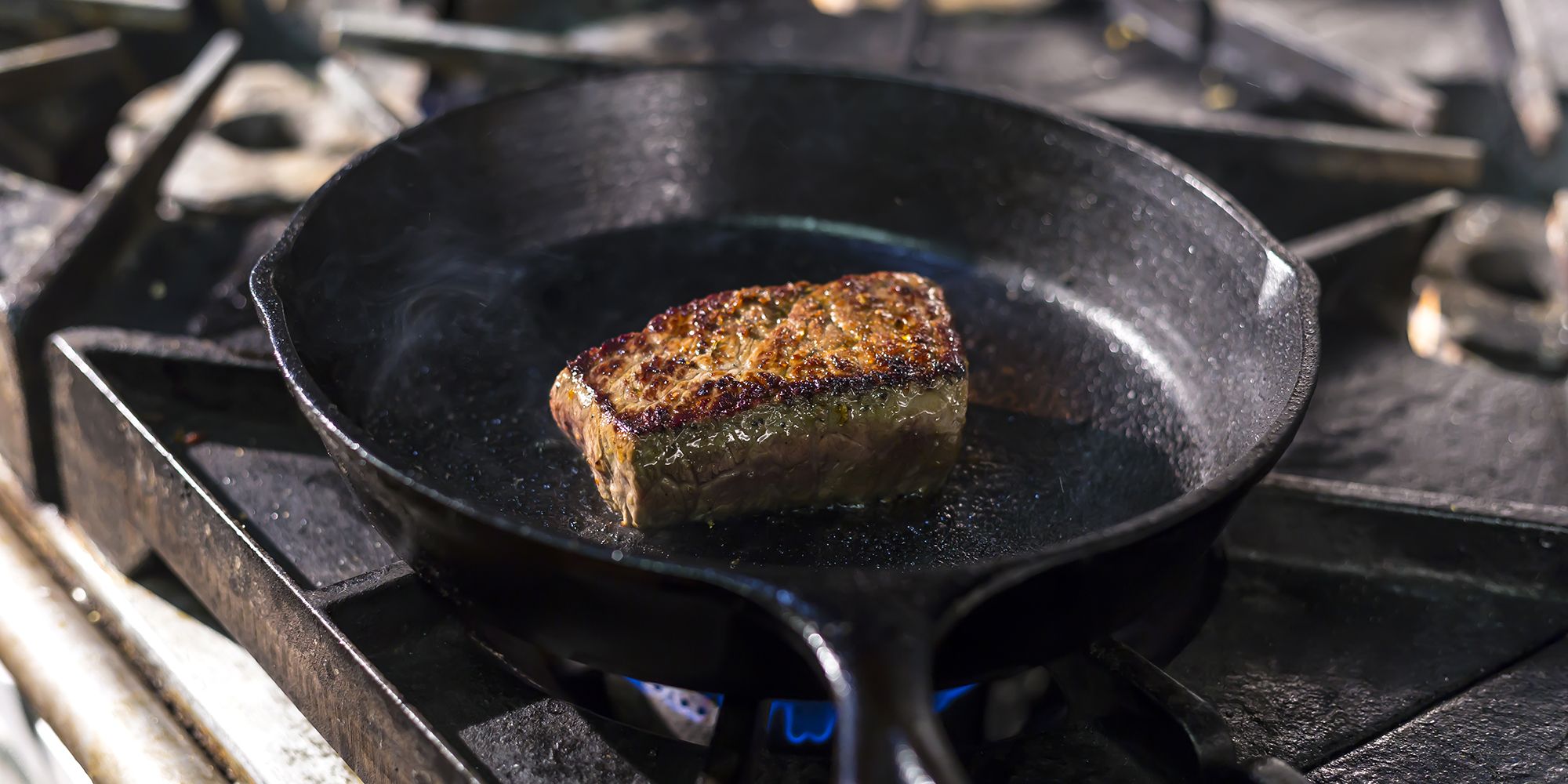Skillet Guide Cooking 101: A Comprehensive Guide to Enhancing Your Culinary Skills
Skillet Guide Cooking 101: A Comprehensive Guide to Enhancing Your Culinary Skills
Blog Article
Master the Art of Food Preparation With a Frying Pan: a Novice's Overview
Master the Art of Food Preparation With a Skillet: a Newbie's Guide is an extensive resource for people anxious to boost their cooking skills utilizing a functional kitchen tool - the skillet. From selecting the ideal frying pan to understanding important strategies and warmth control, this guide covers all the fundamentals needed to become a competent frying pan cook.
Choosing the Right Frying Pan
Selecting the right skillet is essential for understanding the art of food preparation with this flexible kitchen device. With numerous alternatives readily available in the marketplace, it can be frustrating to make the ideal selection. Recognizing the crucial elements to consider can streamline the decision-making process.
Primarily, it is essential to think about the material of the frying pan. Skillets are typically made from cast iron, stainless-steel, or non-stick covered materials. Each product has its own pros and cons. Cast iron skillets are recognized for their superb warm retention and durability, while stainless-steel frying pans provide even warmth circulation and are easy to preserve. Non-stick skillets are wonderful for low-fat cooking and easy cleaning.
Dimension is an additional critical aspect to think about. Frying pans are available in different sizes, generally gauged in inches. It is suggested to pick a frying pan that matches the size of your stovetop burner. A frying pan that is also small may result in overcrowding, while a skillet that is as well big can bring about uneven cooking.
Finally, take care of design and warm resistance need to also be taken into account. A frying pan with a comfortable and long deal with permits very easy maneuverability and decreases the danger of burns. Furthermore, the manage must be heat-resistant to make certain secure handling throughout food preparation.
Important Skillet Techniques
To truly master the art of cooking with a skillet, it is necessary to discover a series of methods that will elevate your culinary skills to new heights. While the skillet is a flexible and crucial device in the cooking area, understanding and mastering these strategies will enable you to create a selection of scrumptious meals easily.
One vital technique is sautéing, which entails cooking food swiftly in a percentage of warm oil or fat. This approach is ideal for cooking vegetables, meat, or fish and shellfish, as it assists to retain their all-natural flavors and textures.
An additional essential technique is hot, which includes food preparation food over high warmth to produce a browned and tasty outside. This is usually performed with meats, such as steak or hen, to create a caramelized crust while maintaining the indoor wet and tender.
Deglazing is likewise a valuable strategy that entails including fluid, such as brew or a glass of wine, to the frying pan after food preparation meat - skillet guide. This assists to create a tasty sauce by loosening up and incorporating the browned little bits stuck to the bottom of the frying pan
Finally, stir-frying is a prominent method that involves rapidly cooking little pieces of food over high heat while constantly stirring. This approach is frequently utilized in Asian food and enables a tasty and quick meal.

Mastering Heat Control
Understanding warm control is essential for attaining ideal results when food preparation with a skillet. The capability to control the temperature and adjust allows you to prepare various active ingredients to perfection. Comprehending warmth control not only stops your food from undercooking or melting, but it additionally enhances textures and flavors.
To start, it is vital to pre-heat your skillet appropriately. Reduced heat is suitable for delicate foods that require gentle cooking, such as fish or eggs.
Maintaining read review the desired temperature during browse around this web-site cooking is equally important. Changing the warm too frequently can affect the food preparation procedure. It is best to begin with medium heat and make small changes as required. If you observe your food cooking as well rapidly, reduce the warmth a little. Conversely, if your food is taking too lengthy to prepare, boost the warm gradually.
Finally, be mindful of the warm retention properties of your frying pan. Cast iron frying pans, for instance, preserve warm well and require reduced warm settings contrasted to stainless steel or non-stick frying pans. By recognizing your skillet's heat conductivity, you can much better manage the cooking process and accomplish constant results.
Taking Care Of Your Skillet
Proper upkeep is vital to maintaining the longevity and performance of your frying pan. Caring for your skillet entails a few simple yet crucial actions that will guarantee it remains in exceptional condition for several years to come.

Secondly, it is recommended to period your frying pan regularly. Flavoring entails using a slim layer of oil to the frying pan's surface area and home heating it up until it polymerizes, producing an all-natural non-stick layer. This procedure enhances the skillet's performance and protects against food from sticking.
Moreover, keeping your skillet appropriately is crucial. To stay clear of harming the surface area or scratching, put a paper towel or towel in between each skillet if you pile them. It is likewise suggested to store your skillet in a dry location to stop moisture and rust formation.
Last but not least, keep in mind to periodically evaluate your frying pan for any signs of wear or damages - skillet guide. Address them immediately to protect against more wear and tear. if you notice any concerns.
Delicious Frying Pan Recipes
For those seeking to increase their cooking collection, the frying pan provides a range of scrumptious recipe options. The versatility of this kitchen tool enables a large range of food preparation techniques, from scorching and browning to sautéing and simmering. Whether you prefer meat, seafood, veggies, or grains, there are plenty of skillet dishes that will certainly satisfy also one of the most critical taste.
One timeless skillet recipe is the seared steak. By pre-heating the frying pan and including a touch of oil, you can attain a flawlessly caramelized her response crust on the exterior while maintaining the meat tender and juicy on the inside. Match it with a side of sautéed vegetables or a luscious mushroom sauce for a passionate and complete dish.
If you remain in the mood for fish and shellfish, a frying pan recipe like lemon garlic shrimp is both fast and tasty. With just a couple of straightforward components like fresh shrimp, minced garlic, lemon juice, and butter, you can develop a delicious dish that can be appreciated by itself or served over pasta or rice.
For vegetarians, a frying pan recipe like ratatouille is a fantastic choice. This typical French meal includes a collection of vivid veggies such as eggplant, zucchini, bell peppers, and tomatoes, cooked with each other with flavors and herbs to produce a harmonious mix of flavors.
Final Thought
To conclude, understanding the art of food preparation with a skillet needs choosing the appropriate frying pan, learning essential methods, grasping warm control, and caring for the frying pan correctly. By adhering to these actions, beginners can come to be proficient in utilizing a skillet for different delicious dishes.
Master the Art of Cooking With a Frying Pan: a Beginner's Guide is a comprehensive resource for individuals excited to boost their culinary abilities using a flexible kitchen tool - the skillet. From selecting the right frying pan to understanding vital techniques and warmth control, this guide covers all the principles needed to become a skilled skillet chef. Furthermore, it supplies beneficial understandings on correct frying pan upkeep and offers a collection of delicious recipes that display the frying pan's possibility. Cast iron frying pans are recognized for their excellent heat retention and sturdiness, while stainless steel frying pans use also warm circulation and are simple to preserve. A skillet that is also tiny might result in congestion, while a frying pan that is as well big can lead to unequal cooking.
Report this page